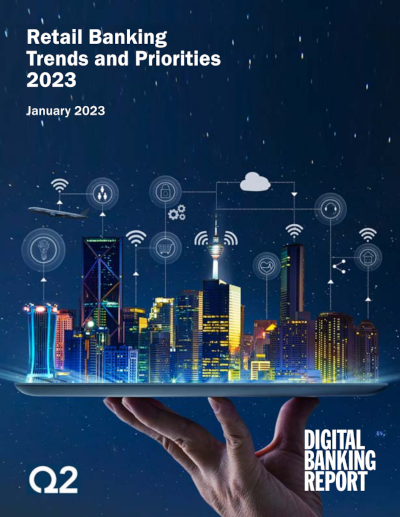Retail Banking Trends and Priorities 2023
Jim Marous
January 2023
: DBR 296
59 pages, 18 tables/charts
Download Printable Version of this page
Economic uncertainty has put an increasingly bright spotlight on the ability for traditional financial institutions to rethink existing business models from the inside out, to support an increasingly digital consumer. From delivering new digital solutions at speed and scale, to personalizing experiences with predictive engagement, banking leaders must make significant paradigm shifts.
The digitization of banking has also triggered a new wave of competition between traditional and non-traditional financial service providers. The pressure is on to quickly become ‘digital-first’ organizations from the top down.
In 2023, the lack of venture funding will result in many fintech firms collaborating with (or being purchased by) incumbent banks, greatly improving the speed of innovation. Some of this innovation will enable smaller banks and credit unions to serve narrow segments or increase market share with banking-as-a-service (BaaS), embedded banking, or open banking solutions. Collaboration with third-party providers will also assist financial institutions as they try to cut costs and increase efficiencies to become more future-ready.
After years of talking about the potential of using artificial intelligence to improve customer experiences, 2023 will see AI can helping financial services firms automate processes, increase efficiency, reduce costs, and improve predictive customer engagement. There will also be enhancement of current uses in fraud and risk detection, regulatory compliance, and account opening and loan decisioning processes.
In the past, the banking industry has taken a defensive posture when preparing for an economic downturn, including a decrease in back-office upgrades, reduced spending on new technologies, a lower emphasis on innovation, and layoffs.
While some of these strategies may still make sense for some institutions, the banks and credit unions that combine these defensive tactics with offensive digital banking transformation investments in customer experience, innovation, human skill upgrades, and modern technologies can create substantial differentiation.
The 2023 Retail Banking Trends and Priorities report is sponsored by Q2. The insights are the result of a comprehensive global research initiative that included more than 600 financial services executives from small and large organizations. It is hoped that the learnings from this report will become instrumental in building more future-ready financial institutions that will create better experiences for both customers and employees.
Retail Banking Trends and Priorities 2023
Advanced Analytics, AI, Analytics, Artificial Intelligence, Bank, Banking, Big Data, Branches, Credit Union, CRM, Customer Experience, Customer Engagement, Digital Banking, Digital Banking Transformation, Digital Lending, Digital Marketing, Digital Transformation, Engagement, Fintech, Innovation, Marketing, Mobile Banking, Payments, Personalization, Technology, Trends

